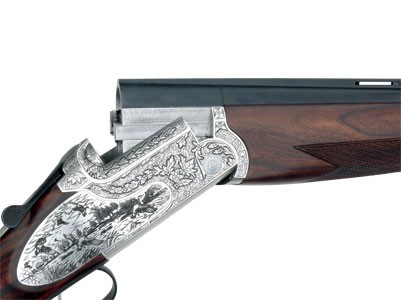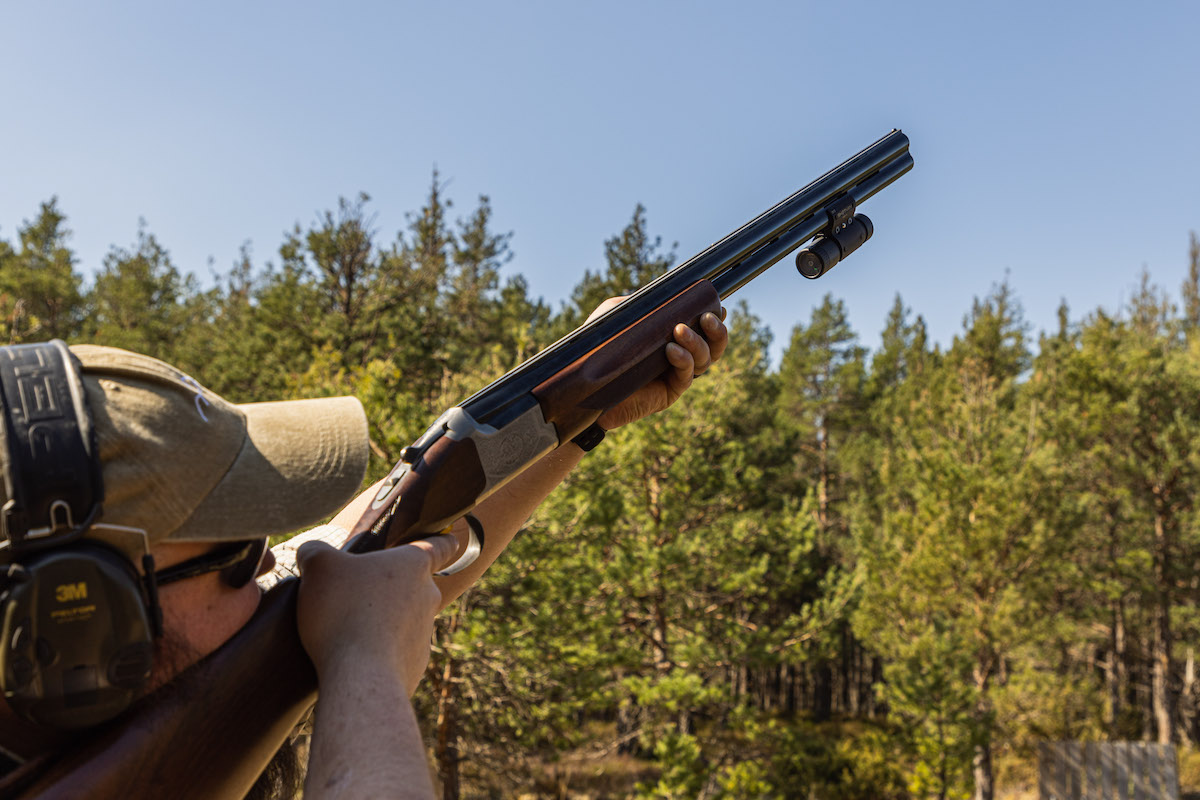Yildiz SPZ ME Lux Special

Yildiz SPZ ME Lux Special
Turkey is the new Spain. That is the word that has been around the gun trade for some time. The result for shooters? Generally, well-made guns at affordable prices. There, however, the similarity ends, as in the main Turkeys civilian guns come from large and very modern factories producing other products such as military arms. Spanish makers, certainly when first introduced to the UK market, tend to follow more traditional build methods.
Another advantage Turkey has is gunquality walnut on the doorstep, as it is a major supplier to the world trade. This all sounds fine and dandy, but breaking into a conservative market, where the tradition of established names and hand craftsmanship are held in high regard, is no easy trip. The answer is either to aim for limited production and upmarket prices to enhance the snobeffect
or to try to produce sound, well-made guns at competitive prices. Yildiz has chosen to follow the latter route.
Visually impressive
The SPZ ME Lux special 12-bore is the current top-of-the-range model, and it is a visually impressive gun. The contrast between the highly decorated, polished action, liquorice black barrels and stunning walnut is most effective. Also, for a fairly big gun, the
proportions are easy on the eye only the very neatly shaped trigger-guard seeming just a bit dinky compared with the rest of the gun. Even with what appears to be fairly dense walnut, this example barely registered 6¾lb on the scales, which is a creditable achievement for a 30in barrelled over-and-under.
Weight saving in the right places
How is this achieved? By the use of aluminium alloy for the action body and sideplates, barrels of good modern steel, which are quite slim, especially around the breeches, and simplicity of build. Where many of the older designs of action use 40 or so component parts for the lockwork (excluding the ejector mechanism) this gun has more than 30 per cent fewer parts. That equates not just to an ounce or two weight saving (every little counts) but, as a general rule in gun manufacture, fewer parts means that less can go wrong.
One gets the impression that the Yildiz designers started with a clean sheet of paper and studied other popular designs, identifying each desirable feature. Then, with an overall brief to keep it simple, they got stuck in. Certainly the lockwork, a form of modified trigger-plate action, is a model of simplicity along with the familiar Italian-type barrel selector/safety system and very Beretta-esque ejectors. My only reservations concern the helical mainsprings, which, while powering the hammers to give good strikes, always seem a little smaller than one expects.
Conventional design
In most ways, however, this is a thoroughly conventional gun. The barrels open on hinge discs or trunnions, if you wish to go for a more traditional description of the screw-in type. A full-width locking bolt engages with a bite below the bottom barrel and a single cocking bar activates the lockwork. The ejectors are permanently sprung with pegs engaging into the sides of the action body to pull each extractor arm into the barrel bed, well clear of the action face as the barrels close.
Flawless bores
Superior proofed in Birmingham (the fl eur delys in the proof marks is the giveaway) for 3in (76mm) cartridges and steel shot, the bores are flawless. Both tubes are stamped 18.4mm, which, in what I find a somewhat more flexible old British system, equates to 0.724in; the actual gauged size being 0.726in in other words, at the tight end of the proof size.
The degree of choke, as the handbook explains with wonderful clarity, is shown by one line (or notch) being the narrowest choke choke sizes enlarging as the number of lines increases. That, though, is the limit of the information, neither is there any other detail on the actual choke tubes.
For the record, with this gun a comparison of sizes with the bore gave the following nominal choke sizes: one notch/full choke, two/tight three-quarter, three/tight half, four/ tight quarter and five/skeet. While nearly all are a bit on the tight side, there is still plenty of choice. The importers recommend steel shot should not be used with any choke restriction tighter than half.
Externally the barrels are well finished, with nicely laid ventilated top- and side-ribs, a machined non-glare fi nish along the toprib, traditional brass bead and good detailing at the muzzle.
Modernised rose-and-scroll
Decoration on this gun is quite extensive and has the advantage of sideplates giving much more scope to add eye-catching detail. Sometimes scorned in the old established trade as mock sidelocks, it is true that sideplates are in reality only dummy lockplates. Nonetheless, they impart a pleasing line that cannot be achieved with a straight-backed action body. Look at them as a decorative addition rather than imitation locks and then their function takes on a whole different meaning.
The laser-etched scene on each of these plates is a mirror image of the other, while the action body follows a modernised style of rose-and-scroll. This is extended to the knuckle of the fore-end iron and latch. A similar effect is evident on the blacked trigger-guard, top-lever and along the top strap. The barrel selector/safety button sports an investment cast and quite practical chequered finish. As for the trigger, while an essentially practical rather than decorative item, it is delightfully slim and nicely shaped. The well-thought-out trapdoor arrangement which closes the bottom of the trigger-plate is an especially good feature.
A hint of fiddleback
Last, but certainly not least, is the walnut stock and fore-end. The grade of walnut used on this gun is truly amazing. At first I was a little suspicious that the deep brown colour might only extend to the visible parts, but no, what you see really is what you have got: dense, fine-grained walnut, with an abundance of dark veining and a hint of fiddleback. Handchequered and oil-finished, you have a recipe for a much more expensive gun. Even the shape and styling follows classic lines from the panel around the sideplates and the generous curve of the pistol grip to the slim comb and fine shaping of the face of the stock. A good match is the fore-end, both for colour and patterning of wood to the almost roach-belly styling.
That vital ingredient
Beauty is one thing, but without performance and handling it has no substance. I am glad to be able to report that the Yildiz is not a disappointment in this department. Handling was good, balance being just about at the front lower edge of the fore-end
knuckle. This gives that slight bias towards the barrels, which is a boon to many shooters.
With a drop across the comb of just more than 1½in running to nearly 25⁄8in at the heel, this gun comes up well, especially for a tallish user. A length of pull bordering on 145⁄8in coupled with a reasonably slim grip around the hand of the stock and matching fore-end dimensions all felt very comfortable, which is a vital ingredient in user confi dence.
Good shot patterns
In action, the trigger-pulls seemed a little long, which seems to be the industry norm, but at a clean break of around 5lb they were not unduly hard. The barrel selection with the non-auto safety was defi nitely a no-fumble type. I was surprised to find no visible indication of which barrel I had selected. Even though it makes it clear in the handbook, some users will forget which direction selects which barrel, but with multi-chokes the whole exercise can become academic.
Shot patterns proved good, only the two more open chokes leaving a scattering of pellets on the periphery of the shot circle. Ejection was crisp and strong and, in spite of my earlier reservations, primer strikes were sufficiently deep and well-centred.
A performance with bells on
The Yildiz SPZ has a lot going for it. Not only does it look good, but handling and performance ring all the bells. If Turkey really is the new Spain, then watch out for plenty of guns like this in years to come.








